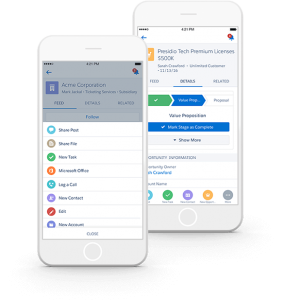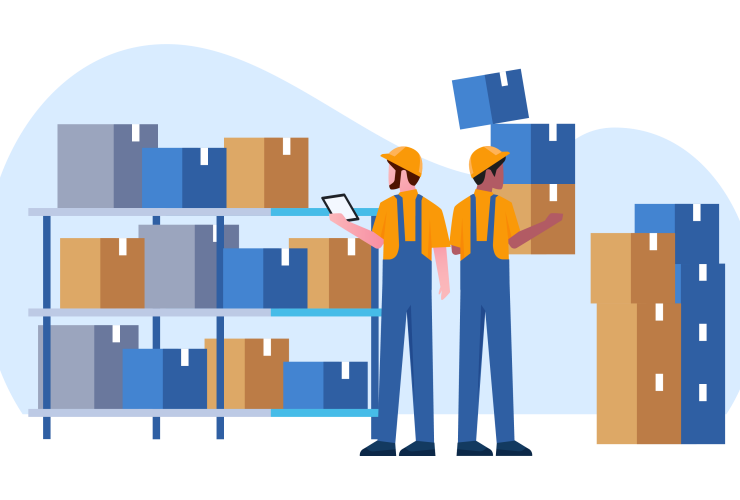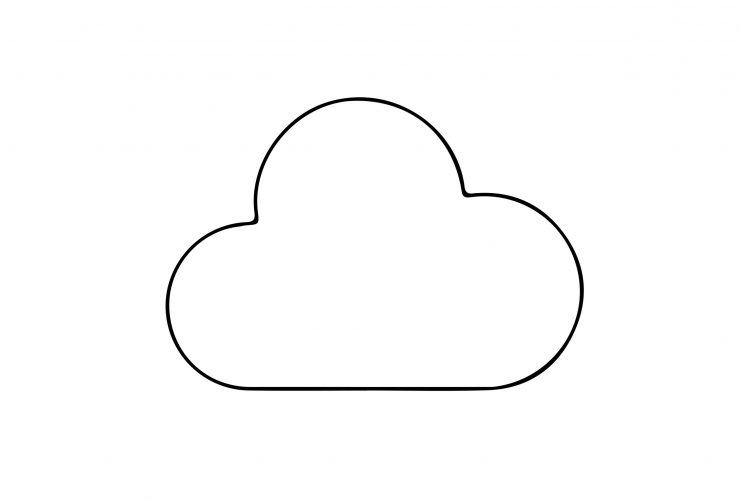Digital Transformation for Aviation Suppliers – How?
Why does digital transformation matter?
 What is digital transformation, and what does it mean for aviation? Generally, digital transformation is the integration of digital technology into all areas of a business. This can result in fundamental changes to how businesses operate and how they deliver value to customers. Additionally, it’s a cultural change that requires organizations to continually experiment and challenge the status quo. This can sometimes mean walking away from long-standing business processes that companies were built upon in favor of relatively new practices that are still being defined.
What is digital transformation, and what does it mean for aviation? Generally, digital transformation is the integration of digital technology into all areas of a business. This can result in fundamental changes to how businesses operate and how they deliver value to customers. Additionally, it’s a cultural change that requires organizations to continually experiment and challenge the status quo. This can sometimes mean walking away from long-standing business processes that companies were built upon in favor of relatively new practices that are still being defined.
For many years, aviation technology has been lagging, with many companies continuing to use technologies and processes of the past. In addition, many companies feel they don’t have the adequate resources or systems in place to take on a transformation project. In this article we are going to focus on digital transformation with a view towards the aviation industry. In addition, we’ll provide a few specific examples of ways you can apply this transformative thinking to your business.
There are a number of reasons that a business may undergo digital transformation. By far, the most likely reason is they have to; it’s a survival issue for many.
But even if you don’t believe your company has to transform, there are many reasons why you should consider it.
- Your competitors are doing it. According to a Forrester Research report, executives predict that nearly half of their revenue will be driven by digital by the year 2020.
- It will make you more profitable. In a recent Gartner survey, “56 percent said that their digital improvements have already improved profits.”
- It will make you more efficient. Research shows, “Nine out of 10 IT decision-makers claim legacy systems are preventing them from harnessing the digital technologies they need to grow and become more efficient.”
- Your customers will thank you. Whether external customers, or internal employees, people have already largely adopted digital practices in all facets of their lives, from shopping online via their mobile devices to adjusting their home thermostat remotely. They are waiting for business to catch up.
What drives digital transformation?
An important element of digital transformation is, of course, technology. But often, it’s more about getting rid of outdated processes and legacy technology than it is about adopting new tech.
If businesses want to evolve with the rapid pace of digital change today, they must work to increase efficiency with technology wherever possible. For many, that means being able to change processes more quickly across the business.
How can I get started on digital transformation?
Focus on your customer
 While digital transformation can take on many forms including employee engagement, a major focus of this transformation should be on your customer. How we can respond faster and make doing business with us easier.
While digital transformation can take on many forms including employee engagement, a major focus of this transformation should be on your customer. How we can respond faster and make doing business with us easier.
Many transformation projects start with defining a single view of the customer. oftentimes, customer data is in many different places within an organization. ERP data, spreadsheet data, and third party systems all contribute to the confusion. Customers expect you to know them regardless of who they speak to in the business. Sales, Support, Operations and other departments all need to have a single view of the customer. Without it, a customer can get frustrated with your company.
Think of the times you call support for a cellular company, or cable company and have to repeat the same story to multiple representatives within the company. How do you feel when you hang up? Experiences like these can drive your customers to go elsewhere
Adopt a platform approach
No longer can a business use just a single technology or a ERP system without being integrated into other systems. At AvSight, we believe in a Platform in the cloud approach, or Platform as a Service (PaaS). PaaS can be a set of cloud based services that enable business users and developers to build applications at a speed that on-premise solutions cannot match. Since a cloud based service there’s no need to worry about the set-up and maintenance of servers, patching, upgrades, authentication, and so on, so you can focus on creating the best user experience possible.
“By using an open approach as well as a large 3rd party ecosystem, you can rapidly add functionality without having to create it all yourself.”
An example of the platform approach is Apple and Android. Each of these companies know they cannot build all the features everyone needs into the Operating System, so by using a platform approach, individual users can customize and add functionality to their devices.
The same is true for your business applications. A single, out of the box ERP cannot possibly have all the functionality for today’s digital business. By using an open approach as well as a large 3rd party ecosystem, you can rapidly add functionality without having to create it all yourself.
For example, integrating a B2B Ecommerce platform, or using Docusign to electronically sign quotes and POs for quicker processes. These integrations each have different technological needs, but the theme is that your technology needs to be open and allow for a platform approach. A few aviation platform concepts are discussed below.
Expandable ecosystem
As mentioned above, an open ecosystem can be key to a successful Digital Transformation. This is because having access to other business “apps” can allow you to add large amounts of functionality without a large project to build it. For example, the Salesforce Appexchange has over 3000 business applications ranging from electronic signatures, contract management, and sales enablement tools. Each can be added with just a few clicks and fully integrated into the Salesforce environment in hours not months.
Integrated with other aviation systems
There are many different data tools and services available for the aviation industry. A software platform that can incorporate these tools into your business can save much time and improve customer service. Automatically loading quotes from ILS, search availability from PartsBase, finding repair capabilities from OneAero MRO are just a few examples of integrating data into your processes. Having to leave one system and open another is not efficient, so having access to this industry data in the software you work in all day can be a game changer.
Ability to talk to others (APIs)
APIs, or application program interfaces, are vital tools of digital transformation. The importance of APIs from a technical standpoint is they allow the capabilities of one computer program to be used by another. They are a means by which two different programs are able to communicate. APIs enable your company to grow, and rapidly transform digitally faster than ever before.
The main reason that APIs matter so much is that they allow for faster innovation. Barriers to change are reduced and more people can contribute to an organization’s success.
Be Flexible
 Your business changes constantly, can your technology keep up? Being flexible applies to both your ability to change business processes, as well as the flexibility of your technology. If your technology and software is not flexible, then it will be difficult to change and automate processes quickly. Some examples of flexibility are described below.
Your business changes constantly, can your technology keep up? Being flexible applies to both your ability to change business processes, as well as the flexibility of your technology. If your technology and software is not flexible, then it will be difficult to change and automate processes quickly. Some examples of flexibility are described below.
Workflow & Automation
Workflow and Automation is a great place to start with Digital Transformation. There are many business process that can be automated and often these development tools are readily available. Automating many of the routine tasks that employees handle will free them up to focus on much more valuable tasks and will improve customer satisfaction. Some examples are below:
- Email Invoice on Shipment
- Send Core Due reminder when overdue
- Send quote follow up if no activity after 3 days
- Notify customers on shipments
- Notify vendors of delivery dates when overdue
Developmental tools
Rarely does a software package work for your business out of the box. True digital transformation or Digital transformation involves being able to modify technology to fit your business and processes, not the other way around. Two businesses are rarely the same, so your technology and software should be able to be adapted to fit your business.
“Digital transformation requires being able to modify technology to fit your business and processes, not the other way around.”
Having the ability to customize your software without causing long term upgrade issues is critical. Having development tools available to do these customizations is also important. Development tools can be defined in 2 categories.
Declarative
Declarative development tools allow you to make changes to your software and processes without writing code. Declarative tools are usually faster and cheaper to build, and generally require less maintenance.
Examples of declarative tools can be:
- Quick Actions
- Page layout customization
- Formula fields and roll-up summary fields
- Validation rules
- Workflows and approval processes
- Custom fields and objects
Programmatic
There are times when making changes can’t be built with declarative tools, and code needs to be written. Programmatic tools are often required for features that:
- Support specialized or complex business processes.
- Provide highly customized user interfaces or customized click-through paths.
- Connect to or integrate with third-party systems.
Regardless of the development tools used, any changes to your software should prevent future updates. A modern software package should allow you to make these changes in your own environment while not interfering with any future upgrades.
Move to a paperless enterprise
Another great place to start with digital transformation projects is eliminating paper processes. Often these processes are excellent candidates for optimizing. Whether it’s an expense report, a customer quote or PO, or a pick ticket in the warehouse, removing paper for any process can yield excellent results.
In a typical aviation business, even the process of sending, approving, and processing a customer quote and order requires many manual and paper filled steps. By incorporating processes like electronic signatures (DocuSign), and B2B eCommerce functionality, the sales cycle can be streamlined for the benefit of your company and your customers.
- Electronic Signatures (DocuSign, etc)
- E-commerce
- Paperless warehouse
Enable a “work anywhere” culture
 Whether you provide AOG/24hr service or not, your customers expect your company to be available when they need you. Incorporating the technology tools and a business culture to handle these expectations should be part of your digital transformation.
Whether you provide AOG/24hr service or not, your customers expect your company to be available when they need you. Incorporating the technology tools and a business culture to handle these expectations should be part of your digital transformation.
Every part of your business should be mobile enabled, not just common wireless processes like the warehouse. With the emergence of iPads, tablets, and cell phones, adding mobility to all parts of your business has never been easier.
Although building a “work anywhere” culture sounds like an easy process, often times the software used by many companies was not built for mobility. Depending on the systems involved, it can be difficult to work remotely. Screens designed for a desktop cannot be easily rebuilt for a tablets or other mobile device.
Terminal Services and VPNs can help mask the problem, but sometimes software will need to be reviewed to ensure it can support a mobile culture.
True cloud based software can help with this process as it is often designed for the web or built to be mobile.
Improve access to data
Data is everywhere, and your employees need access to this data in real time. Data that is locked up in legacy software systems doesn’t help make decisions, doesn’t help drive efficiencies, and doesn’t help your customers.
At AvSight, we recommend the “democratization of data”. Essentially, everyone should be able to run their own reports and analyze data they have access in order to make better decisions and support your customers.
When reporting is centralized within the IT department, or the technologies are so difficult to use that the average employee can’t built what they need, your data becomes useless. Without proper reporting and analysis tools, employees will be frustrated, as will management.
By replacing legacy reporting systems, with next generation drag and drop reporting and dashboarding tools, you can allow your employees to find insights to better drive revenue and provide better service to your customers.
Pilot new technologies
The pace of technology change is increasing and the need for businesses to keep up is important. There are many new technologies that can help the aviation industry, but we’ll look at two in this section. While these technologies aren’t widely adopted and still have some maturing to do, it’s important to keep an eye on both and begin to pilot these within your company. Both have huge and important implications along with the ability to improve aviation software dramatically.
AvSight has begun to pilot and incorporate these technologies natively inside our software. We believe these technologies can create huge benefits to the industry, and we will continue to incorporate them as well as other emerging technologies.
Artificial intelligence & Predictive Tools
Artificial Intelligence (AI) is the concept of having machines “think like humans” — in other words, perform tasks like reasoning, planning, learning, and understanding language. AI is already transforming your customers’ expectations. Think of the consumer who lives by Uber, Google, and Amazon. If he calls you for a part, what does it take to provide him the same level of service he’s grown accustomed to? Customers know you have their data. They know everything you can do with it. And they expect you to use it to provide fast, smart, personalized engagement across every interaction.
- Sales can anticipate next opportunities and exceed customer needs
- Service can be proactive by resolving issues and RMAs before they happen
- Marketing can create predictive journeys and personalize experiences like never before
Blockchain
A blockchain is a tamper-evident, shared digital ledger that records transactions, or part history, in a public or private network. Distributed to everyone in the network, the ledger permanently records, in a sequential chain of blocks, the history of part and asset exchanges that take place between the the network.
All the confirmed and validated transaction blocks are linked and chained from the beginning of the chain to the most current block, hence the name blockchain. The blockchain thus acts as a single source of truth and a full history of every part, and members in a blockchain network can view only those transactions that are relevant to them.
The implications for aviation are enormous. Imagine knowing and verifying the traceability of all parts regardless of paperwork. The ability to quickly verify part history and tracking can make the aviation supply chain safer and increase transaction efficiency.
Summary and first steps
Take inventory of your technology
While Digital Transformation does not always involve technology, outdated technology can be one of the biggest hurdles to a transformation project. A technology review doesn’t need to start with a comprehensive review of every piece of technology, but discovering your current capabilities and identifying any gaps will allow you to determine the best next steps. Any deficiencies should be addressed based on the current and future needs of the company.
“While Digital Transformation does not always involve technology, outdated technology can be one of the biggest hurdles to a transformation project.”
Look for quick wins
Not all projects need to be a large project. There are many, many smaller projects that can yield excellent results quickly. The easiest place to look for many quick projects is a review of repetitive tasks. Any repetitive task that a team member does manually more than a couple of times per week is a good candidate for automation. AvSight tools like process builder, workflow rules and automation flows can help with this process. Other tools might be available depending on your current technology capabilities.
As you identify potential quick win projects, keep a list and make it public. This list, as well as announcements of new automations will help inspire a culture of innovation.
Create a culture of innovation
You can’t do this alone, and having the whole team keeping their eyes out for ares of improvement can help greatly. When everyone is looking for areas to improve and automate, ideas can flow quickly. As the team starts to see wins more often, that culture will grow exponentially. Their time can then be spent on more important things like customer service, sales, and non repetitive tasks.
Experience AvSight for Yourself
Request a demo to see how our next generation aviation platform can give your company a competitive edge.
Request A Demo



